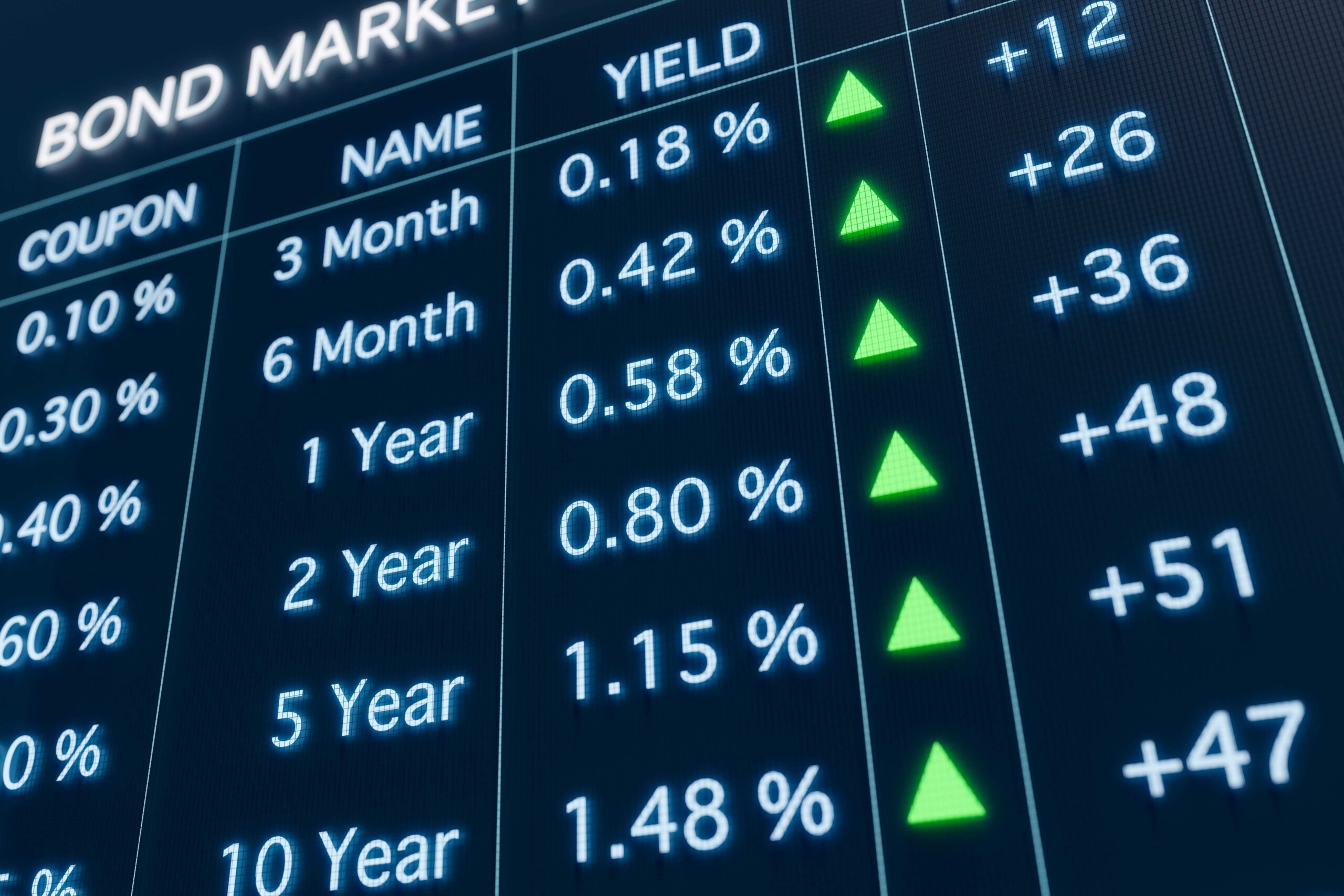

After the very difficult conditions for Bond investors seen last year, we are seeing growing evidence that a change in direction is now likely. This could herald an improved performance for an asset class that has struggled over the last 18 months and suggests that good opportunities exist in Fixed Interest markets at the present time.
Bond markets tend to do well in periods when interest rates are low, as the yield (the return offered by a Bond) looks attractive compared to the rate of interest you could obtain through a bank or building society. Interest rates have risen sharply over the last 18 months, as central banks aimed to combat the higher prevailing rate of inflation. The only way for Bonds to remain competitive with overnight money is for the price to fall, which in turn increases the yield.
We have taken action in the CDI portfolios since the start of 2022, with the aim of protecting the Bond element of our CDI portfolios against the potential for higher interest rates. We moved into shorter dated Bonds immediately after the Russian invasion of Ukraine, and have focused on short dated Bonds throughout this period. Indeed, we even briefly moved out of Bonds completely during the period following the ill-fated mini-Budget announced last September. As interest rates continued to climb, we have added to our cash position, to take advantage of the higher rates on cash deposit.
Government and Corporate Bonds have universally struggled since early 2022, and returns have been disappointing. This does, however, leave Bonds attractive priced at current levels and we feel that Bond markets now offer significant opportunities.
Why is the outlook brighter?
The Bank of England and US Federal Reserve have both now paused their rate hiking cycle, bringing to an end a run of successive rate increases. Whilst there remains a possibility that either or both could raise rates again, we feel this is unlikely. Firstly, we expect inflation to continue to fall over the remainder of this year and into 2024, and the speed at which inflation returns to more normal levels could be a surprise. UK inflation data in August was weaker than expected and, in the US, inflation rests just above 3%.
Secondly, economic growth is likely to slow through the next 6-12 months in many Western economies. Ratings agency Fitch recently reduced the outlook for global growth next year, and the OECD projection is for the US economy to rise by only 1% during 2024. Consumer confidence is expected to weaken and the housing markets in both the US and UK are both under pressure given the impact of higher mortgage rates.
As a result, the next substantive move in interest rates may well be down. Economists and market participants are currently weighing up whether rates will be eased gradually or potentially more aggressively, depending on the pace of economic growth. Central banks are adopting a policy whereby their decisions are being led by inflation, unemployment and growth data. Should data remain strong, then there is a case to suggest that rates will only fall gradually, but in the event that data is weaker than expected, then calls will grow for central banks to take more rapid action. There is also discourse as to the timing of rate cuts, with some suggesting the first cuts could come in the first half of next year, whilst others seeing the easing cycle starting in the third or fourth quarters of 2024.
Just as increases in interest rates are generally negative for Bonds, cuts in base rates may well prove positive. At the time of writing, a 10 year US Treasury Bond is currently yielding 4.8%, which doesn’t appear overly attractive when compared to overnight interest rates available on cash deposit; however, locking into a yield of 4.8% could look very attractive should base rates fall over the medium term, say to between 3% and 4%.
Time to revisit Bonds?
After a very difficult 18 month period, Bond prices are attractive, and we feel there is good reason to see value in Bonds at current levels. Investment Grade Corporate Bonds (i.e. those Bonds issued by companies who credit rating agencies deem to be financially stable) and Government Bonds may well see a slow re-rating, as the economic landscape changes over the coming year. Despite the fact that the default rate (that is to say the number of Bonds who fail to repay capital or interest to investors) remains low, a slowing economy could lead to an increase in defaults from more speculative Bonds.
We will continue to monitor Bond markets and market momentum, with a view to increasing Bond exposure and lengthening the duration of our Bond exposure over the coming months. We regularly speak to leading Bond and Fixed Interest fund managers and monitor economic data on an ongoing basis, and this analysis helps shape the decisions we reach at each quarterly CDI portfolio review.
Sources:
- Fitchratings.com, OECD economic outlook.
- US Bureau of Labor Statistics.